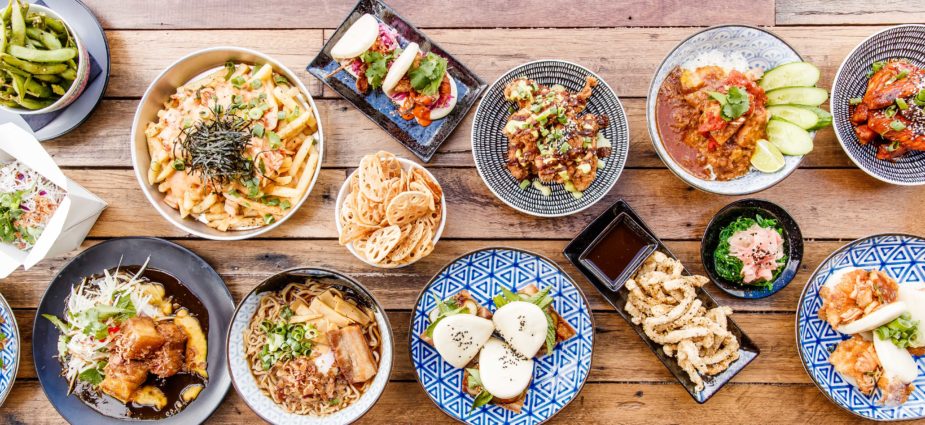Asian cuisine is a culinary journey through a diverse array of flavors, textures, and cooking techniques. From the spicy complexity of Thai curries to the delicate balance of Japanese sushi, each dish reflects centuries of culinary tradition and cultural heritage. To truly appreciate the nuances of Asian cooking, one must delve into the secrets of its preparation, understanding the ingredients, and mastering the techniques that bring out the best in each dish.

Embracing Diversity: The Key Ingredients
Rice – The Staple Grain
Rice forms the cornerstone of many Asian dishes, serving as a versatile base for countless recipes. Whether it’s the fluffy jasmine rice of Thailand or the sticky sushi rice of Japan, mastering the art of cooking rice is essential to authentic Asian cuisine. Rinse the rice thoroughly to remove excess starch, then cook it with precision, ensuring just the right balance of moisture and fluffiness.
Soy Sauce – The Umami Elixir
Soy sauce is to Asian cuisine what olive oil is to Mediterranean cooking – an indispensable ingredient that adds depth and complexity to dishes. Made from fermented soybeans and wheat, soy sauce imbues dishes with a rich umami flavor, enhancing everything from stir-fries to marinades. Experiment with different varieties, from light soy sauce for delicate flavors to dark soy sauce for a more robust taste.
Fish Sauce – The Essence of Southeast Asia
Fish sauce is a pungent yet essential ingredient in many Southeast Asian cuisines, including Thai, Vietnamese, and Filipino. Derived from fermented fish and salt, fish sauce adds a distinctive savory note known as “umami” to dishes, balancing sweet, sour, salty, and spicy flavors. Use it sparingly to season soups, sauces, and stir-fries, allowing its complex flavors to shine without overpowering the dish.
Mastering the Techniques: From Stir-Frying to Steaming
Stir-Frying – The Art of Wok Mastery
Stir-frying is a quintessential Asian cooking technique that requires high heat and quick cooking to preserve the vibrant colors and crisp textures of ingredients. Start by heating your wok until smoking hot, then add oil and aromatics like garlic, ginger, and scallions. Next, toss in your protein and vegetables, stirring constantly to ensure even cooking. Finish with a splash of soy sauce or oyster sauce for flavor, and serve immediately for a deliciously fresh and vibrant dish.
Steaming – Capturing Pure Flavors
Steaming is a gentle yet effective cooking method that preserves the natural flavors and nutrients of ingredients, making it ideal for delicate seafood, vegetables, and dumplings. Invest in a bamboo steamer or metal steaming basket, then arrange your ingredients in a single layer for even cooking. Steam until tender but still vibrant in color, then serve with a drizzle of sesame oil and a sprinkle of sesame seeds for an authentic touch.
Dumpling Making – The Art of Folding
Dumplings are a beloved Asian delicacy, enjoyed in various forms across the continent, from Chinese potstickers to Japanese gyoza. Mastering the art of dumpling making requires patience, precision, and a knack for folding techniques. Start with a simple dough made from flour and water, then fill it with your choice of ingredients, such as pork and cabbage or shrimp and chives. Fold the dumplings into intricate shapes, sealing them tightly to prevent any filling from escaping during cooking. Steam, boil, or pan-fry the dumplings until golden and crisp, then serve with dipping sauce for a satisfying snack or meal.
Honing Your Palate: Balancing Flavors and Textures
Sweet, Sour, Salty, Spicy – The Four Pillars of Flavor
Asian cuisine is renowned for its ability to balance a diverse range of flavors, creating harmonious dishes that tantalize the taste buds. Pay attention to the interplay of sweet, sour, salty, and spicy elements in each recipe, adjusting seasonings to achieve the perfect balance. For example, balance the sweetness of coconut milk with the acidity of lime juice in a Thai curry, or offset the saltiness of soy sauce with the heat of chili peppers in a Chinese stir-fry.
Crispy, Tender, Chewy – The Textural Symphony
Texture plays a crucial role in Asian cuisine, with dishes ranging from crispy spring rolls to tender braised meats to chewy rice cakes. Experiment with different cooking techniques to achieve the desired texture in each dish, whether it’s deep-frying for crispiness, braising for tenderness, or steaming for chewiness. Consider the contrast of textures in your overall menu planning, balancing crunchy, soft, and chewy elements for a satisfying dining experience.
Conclusion: Embarking on a Culinary Adventure
Mastering the art of cooking Asian cuisine is a journey of exploration and discovery, with each dish offering a glimpse into the rich tapestry of flavors, textures, and traditions that define the region. By embracing diversity, mastering techniques, and honing your palate, you can unlock the true essence of Asian cooking and create unforgettable culinary experiences for yourself and others. So gather your ingredients, fire up your wok, and embark on a culinary adventure that will transport you to the vibrant streets and bustling markets of Asia. Bon appétit!